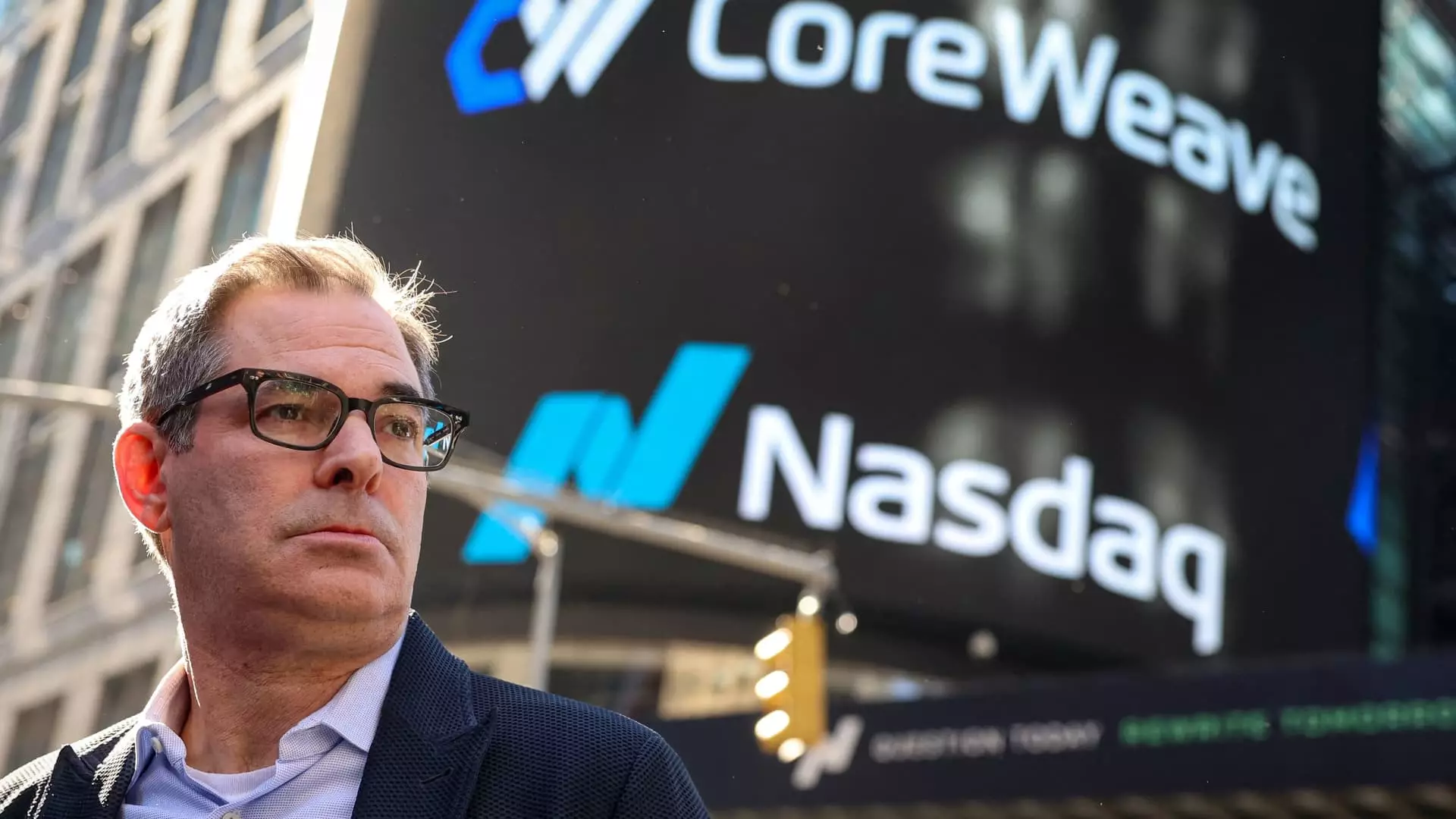In the tumultuous world of technology, few narratives have been as riveting as that of CoreWeave, the AI server rental company. Following its market debut in March, the company saw its shares teeter near the flatline, reflecting both investor enthusiasm and palpable anxiety about its ambitious financial strategies. CEO Michael Intrator’s declarations of $20 billion to $23 billion in expected capital expenditures (capex) for the year have set the industry abuzz. While the number wildly eclipses analysts’ expectations of $4.61 billion—a staggering underestimation in hindsight—it raises a critical question: Is CoreWeave’s bullish growth trajectory sustainable, or are we witnessing the early signs of a financial miscalibration?
CoreWeave’s financial ambitions may be buoyed by strong revenue reports and eager demand from megatech clients such as Microsoft and Nvidia, but its lavish spending appears at odds with Wall Street’s more skeptical take. Clearly, CoreWeave is riding the AI wave, yet the precarious balance between growth investment and fiscal responsibility seems dangerously skewed.
The Pitfalls of Overreliance on AI Demands
At the crux of CoreWeave’s operations lies the pivotal relationship with AI clients, particularly with the likes of OpenAI, which recently solidified its commitment with contracts exceeding a combined $16 billion. This dependency on a few key clients is fraught with risk: what happens if these demand signals cool off? Analysts have rightly pointed out that a business model tethered so tightly to a specific sector can lead to dire consequences. If the hype surrounding AI were to dissipate—perhaps due to competitive innovation or regulatory changes—the financial foundation of companies like CoreWeave could crumble, given their staggering capital expenditures.
The fact remains that CoreWeave reported a net loss of $314.6 million—a significant deterioration from $129.2 million the previous year—indicative of a company grappling with the true costs of rapid expansion. These losses were in part attributed to a whopping $177 million in stock-based compensation, which raises ethical concerns about rewarding executives in an environment where the company’s fiscal health appears less than rosy.
The Illusion of Stability: Debt and Sustainability Concerns
Despite Intrator’s assurances of a robust financing landscape, the numbers paint a contradictory picture. The debt accumulations and the inherent risks of ramping up infrastructure must be taken seriously. The downgrade from DA Davidson Analyst Gil Luria highlights these concerns: CoreWeave is all but committing financial “destruction of capital,” with a troubling interest-to-acquire assets ratio that signals a precarious operational strategy. Simply put, the financial stability that comes from being backed by industry giants may not last if the company cannot convert its growth strategy into sustainable profits.
The argument that CoreWeave is merely catering to “overflow capacity” is particularly troubling. A company that prioritizes short-term gains without a long-term vision for profitability could risk becoming a fleeting entity in the ever-evolving tech ecosystem. True resilience lies in the ability to adapt beyond ephemeral demand, yet CoreWeave seems surprisingly nonchalant at the prospect of nurturing a diverse client base or extending its influence beyond the confines of current contracts.
The Future of CoreWeave: A Double-Edged Sword
The striking projections for revenue growth—up to 363%—may paint a rosy future for CoreWeave at first glance; however, they may serve merely as a smokescreen. As companies across different sectors increasingly seek AI solutions, it is imperative that CoreWeave not succumb to the “growth at any cost” mentality. Market volatility and the stark reality of tech downturns remind us that today’s surging demands can swiftly turn into tomorrow’s liabilities. The technology industry has seen its fair share of “unicorns” that promised soaring success but later crashed due to mismanagement or a failure to pivot effectively in shifting market dynamics.
By questioning the sustainability of its model and being mindful of the risks involved, CoreWeave risks facing a harsh reckoning if it does not reconcile its soaring expenses with tangible returns. Herein lies the lesson: there is an undeniable allure to growth and expansion, but with great ambition must come astute fiscal stewardship. Otherwise, the tale of CoreWeave could morph from one of success into a cautionary chapter on the dangers of excess and overdependence in an unpredictable economic landscape.

